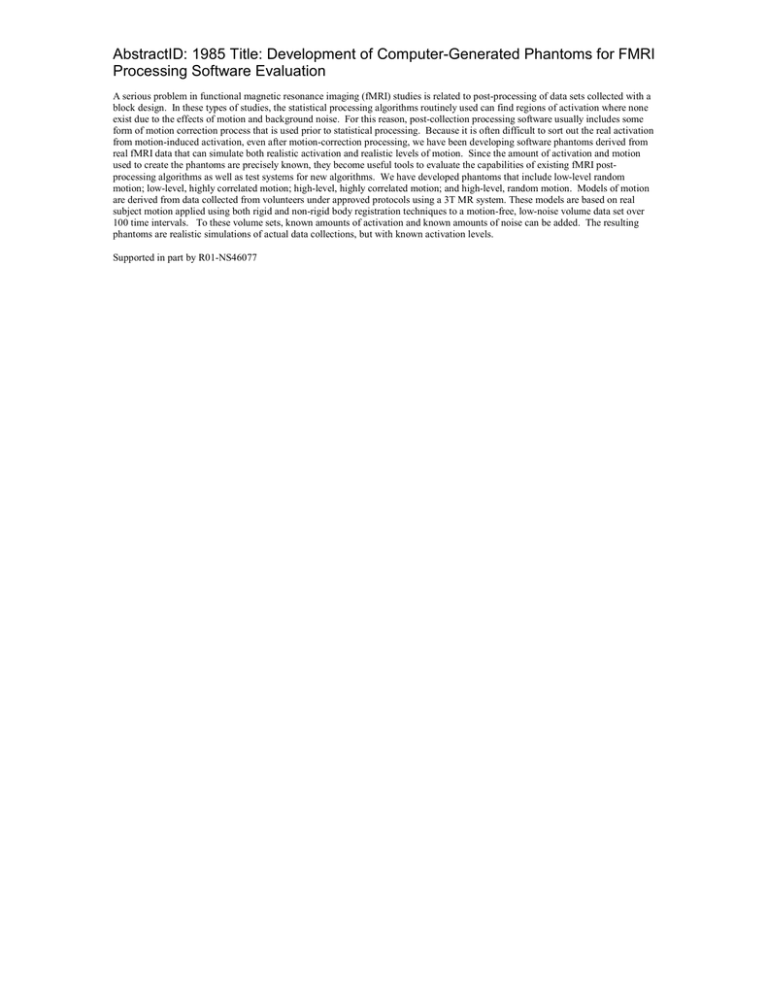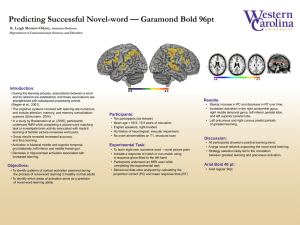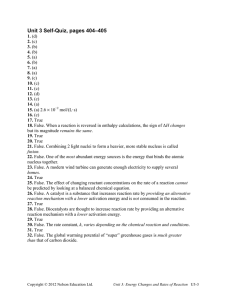AbstractID: 1985 Title: Development of Computer-Generated Phantoms for FMRI
advertisement

AbstractID: 1985 Title: Development of Computer-Generated Phantoms for FMRI Processing Software Evaluation A serious problem in functional magnetic resonance imaging (fMRI) studies is related to post-processing of data sets collected with a block design. In these types of studies, the statistical processing algorithms routinely used can find regions of activation where none exist due to the effects of motion and background noise. For this reason, post-collection processing software usually includes some form of motion correction process that is used prior to statistical processing. Because it is often difficult to sort out the real activation from motion-induced activation, even after motion-correction processing, we have been developing software phantoms derived from real fMRI data that can simulate both realistic activation and realistic levels of motion. Since the amount of activation and motion used to create the phantoms are precisely known, they become useful tools to evaluate the capabilities of existing fMRI postprocessing algorithms as well as test systems for new algorithms. We have developed phantoms that include low-level random motion; low-level, highly correlated motion; high-level, highly correlated motion; and high-level, random motion. Models of motion are derived from data collected from volunteers under approved protocols using a 3T MR system. These models are based on real subject motion applied using both rigid and non-rigid body registration techniques to a motion-free, low-noise volume data set over 100 time intervals. To these volume sets, known amounts of activation and known amounts of noise can be added. The resulting phantoms are realistic simulations of actual data collections, but with known activation levels. Supported in part by R01-NS46077


